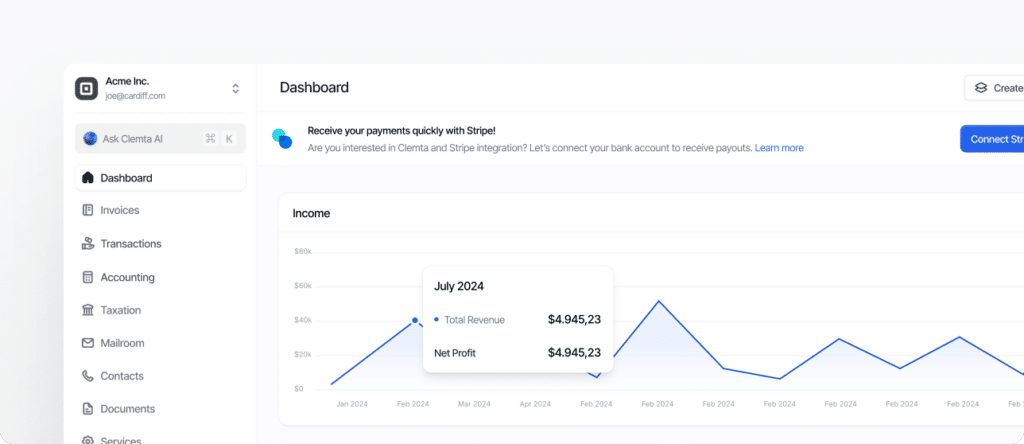The movement of money into and out of a business (tracking how much cash is available to operate, pay expenses, and grow). Positive cash flow means more money is coming in than going out.
What is Cash Flow?
Cash flow refers to the net movement of cash in and out of a business over a specific period. For non-U.S. residents operating U.S. companies, managing cash flow is critical to keeping the business solvent, meeting tax and payroll obligations, and ensuring there’s enough working capital to sustain operations (even if you aren’t physically present in the U.S.).
Unlike profit, which is based on accounting principles and may include non-cash items, cash flow focuses purely on the actual inflow and outflow of money. A company might show a profit on paper while still struggling to pay its bills if its cash flow is poorly managed. For example, if your clients are slow to pay invoices, you might not have enough cash on hand to cover rent, salaries, or subscriptions—even if you’re technically profitable.
Cash flow is typically categorized into operating, investing, and financing activities. Operating cash flow refers to cash generated by core business activities (like receiving payments from customers or paying for supplies and software). Investing cash flow involves purchases or sales of long-term assets, such as equipment or intellectual property. Financing cash flow tracks the money moving between the business and its owners or investors, such as capital contributions, loans, or dividend payouts.
For international founders, strong cash flow management includes monitoring U.S. dollar balances closely, being mindful of foreign exchange costs when funding the company from abroad, and ensuring all U.S. obligations (like tax payments, payroll, or registered agent renewals) are handled on time. A clear, well-maintained cash flow also simplifies discussions with accountants, bookkeepers, and potential investors.
In practice, most businesses use accounting software like QuickBooks or Xero to monitor cash flow and generate regular reports, including the cash flow statement. This financial report helps you assess how well your business is positioned to cover short-term needs, invest in growth, or withstand periods of lower revenue.
In summary, cash flow is the lifeline of your U.S. company. For non-U.S. business owners, maintaining healthy, predictable cash flow is key to building financial stability and scaling the business with confidence

